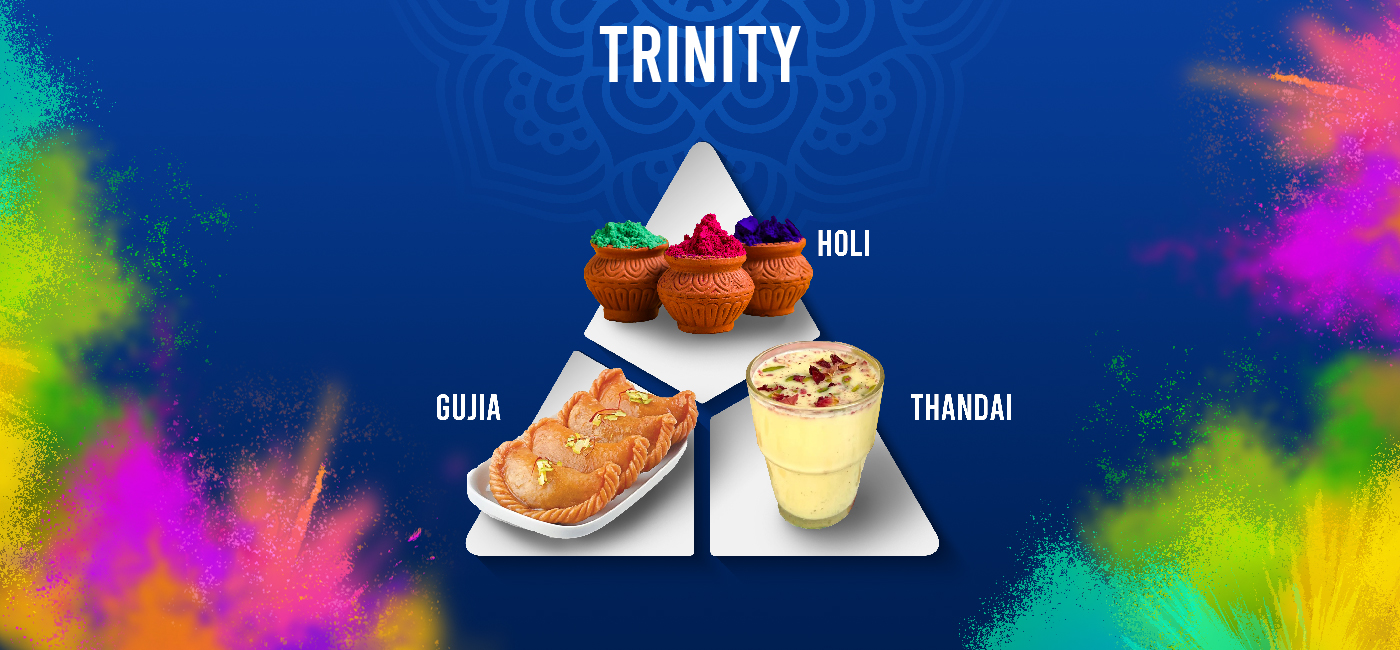Holi kab hai? Kab hai Holi? Gabbar may have wanted to know this to teach Ramgarh’s folks a lesson, but most of us care for the fun with colors, food, and thandai! Today, water balloons are banned, abeer and gulaal have turned organic (Phew! No more looking like a paint shade card for days because of pakka rang), and we are more conscious about saving water. But these are not the only changes the festival has seen of late. There’s one industry in particular that has grown by leaps and bounds.
For generations, we polished off homemade sweets and savories. However, packaged snacks have taken center stage in the past few decades, transforming the festive foodscape into a billion-dollar business. The packaged sweets market size was ₹6,229.7 Crore in 2023 and will likely reach ₹25,970.8 Crore by 2032, with a CAGR of 16.67%.
So, how did Holi Snacks go from their humble beginnings in kitchens to become a dominant player in the Indian FMCG kingdom?

The Era of Homemade Delights
Before the 20th century, the platter was heaped with homemade treats like Gujiya, Malpua, Puran Poli, and Mathri, made with traditional recipes passed down through generations. Nuts and khoya (evaporated milk) symbolized prosperity.

Gujia – The Sweet of Choice
Did you know we’ve been polishing off Gujia since the 13th century? Travelers and traders along the Silk Route were influenced by Turkey’s (then Anatolia) Baklava and Kunjia, Central Asia’s Gulla or Samsa (Samosa), and Iran’s pastry Qottab. These traders from Bundelkhand and Braj returned to India, creating their versions of Gujia.
The Mughal Empire also shaped the gujia of today, introducing flakiness and experimenting with sweet fillings like khoya and nuts.
Over the years, the people in the North stuffed it with khoya, and those in other parts stuffed it with coconut and jaggery.

Holi Special Snacks
The mid-20th century brought local sweet shops catering to festive demands. From Jalebi-Fafda to readymade thandai and regional favorites like the Bihari pedakiya, Gujarati ghughra, Maharashtra’s Karanji, or the Karjikayi or karigadubu in Karnataka, the markets were flooded with options for the busy families in the country.
That’s how businesses commercialized homemade Holi favorites, albeit on a local scale.

Thandai – Nectar of the Gods
Bhang-infused Thandai was first offered to Lord Shiva and became popular during Mahashivratri. The first records of Thandai date back to 1000 BC, making it one of the oldest drinks in the country, if not the world.
It’s a drink that offers a cooling effect to the body, hence the name Thandai. The seasonal transition from winter to Spring often weakens the human immune system. Thandai is known to aid immunity while cooling the body. Nifty, isn’t it?

The Making of the ‘Holi’ Trinity
By the 19th century, Gujia found its perfect match – Holi.
Its sweet filling represents good’s victory over evil, and the crispy exterior signifies resilience. Thandai is the nectar of the Gods, and the color represents the month of Phagun, the season of Spring.

Holi Snacks
The 80s and 90s saw a significant transformation in the Indian FMCG sector. The arrival of new technologies facilitated mass production and packaging of snacks, leading to a longer shelf life and wider distribution.
This decade saw the rise of national brands like Haldiram’s and Guruji, which capitalized on the growing demand for convenience and hygiene.
They also offered standard versions of popular Holi treats like Gujia, Kanom Barfi, and Shankarpali, ensuring consistent taste and quality across regions.

Marketing Genius and Innovations
The new millennium brought intense competition and innovation to the Holi snack market. Companies like Haldiram’s and Guruji expanded their product portfolios, introducing new flavors, textures, and gifting options. Marketing campaigns featuring vibrant packaging, catchy taglines, celebrity endorsements, and healthy options further fueled the demand.
Consider this: stores are selling everything from a 1.5 kg Bahubali Gujia in Lucknow to a Kanpur shop selling gold gujia for ₹30,000 per kg and sugar-free Gujias, along with chocolate, fig, mango, rose, and many other fillings.

The Market of Today
The rise of e-commerce platforms like Flipkart and Amazon offered more distribution channels increasing the reach of these snacks. In 2023, the Indian snacks market size reached ₹42,694.9 Crore.
The packaged sweets market grew, reaching ₹6,229.7 Crore, considering Tamil Nadu consumes 200 kilos of Gujia daily and a whopping 400 kilos on Holi. At the same time, a Lucknow store sells 500 kilos on the festival day!

Holi Faves Are Transforming
Consumers are increasingly seeking healthier and more innovative snack options. Companies will likely respond by introducing healthier snack mixes, incorporating regional flavors, and leveraging sustainable packaging solutions.
Holi snacks have come a long way from their humble origins in Indian kitchens. They now represent a billion-rupee industry and reflect India’s changing social and economic landscape.

The Future of Holi Snacks Market
As India continues to urbanize and consumer preferences evolve, the Holi snack market is poised for further growth. It is projected to bring in an expected value of ₹95,521.8 Crore by 2032, with a growth rate (CAGR) of 9.08% during the period from 2024 to 2032, while the sweets market may soar to ₹25,970.8 Crore, at 16.67% CAGR by 2032.
Of this, the Confederation of All India Traders (CAIT) generated a business of ₹20,000 crores during Holi in 2023, seeing a 30% jump.
How useful was this post?
Click on a star to rate it!
Average rating 3.8 / 5. Vote count: 10
No votes so far! Be the first to rate this post.
I’m Archana R. Chettiar, an experienced content creator with
an affinity for writing on personal finance and other financial content. I
love to write on equity investing, retirement, managing money, and more.
-
Archana Chettiarhttps://www.equentis.com/blog/author/archana/
-
Archana Chettiarhttps://www.equentis.com/blog/author/archana/
-
Archana Chettiarhttps://www.equentis.com/blog/author/archana/
-
Archana Chettiarhttps://www.equentis.com/blog/author/archana/

